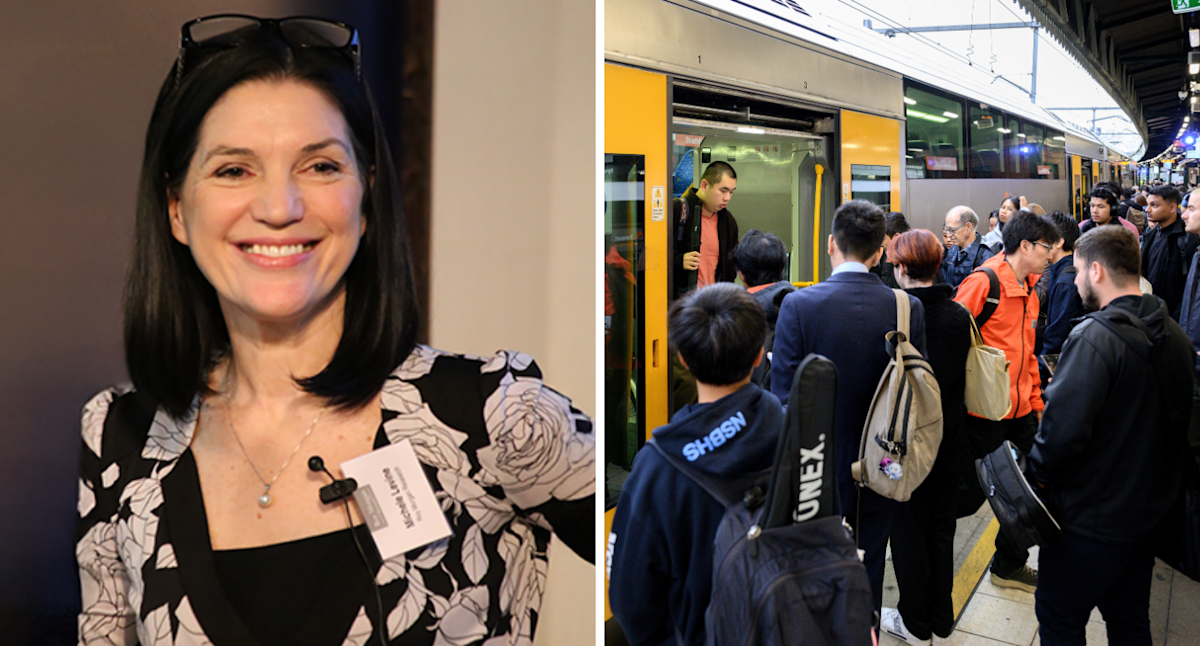Roy Morgan CEO Michele Levine said WFH arrangements had become a “permanent and distinct feature” of Australia’s employment sector. (Source: Roy Morgan/AAP)
Work from home has become a “permanent” feature of Australia’s workplace landscape. More than 6.7 million Australians now work from home at least some of the time, fresh research has found, signalling a major shift in workplaces post-pandemic.
New research from Roy Morgan found 46 per cent of employed Australians work from home at least some of the time, with that figure rising to 51 per cent for full-time workers. The uptake was strongest in the capital cities and industries suited to flexible roles like finance, communication and public administration, the survey of 41,449 Aussies found.
Roy Morgan CEO Michele Levine said the findings “clearly show that ‘work-from-home’ arrangements have become a permanent and distinct feature of Australia’s employment sector”.
RELATED
Across Australia’s biggest cities, 60 per cent of people who work in the CBDs work from home at least some of the time. Sydney leads the way at 70 per cent of workers, followed by Melbourne at 65 per cent and Canberra at 61 per cent.
Perth, Adelaide and Darwin were the only capital cities where the majority of the CBD workforce did not work from home, at 51, 55, and 58 per cent, respectively.
Levin said the data showed “significant variation” in work-from-home rates by workplace size, sector and income level.
Do you have a story to share? Contact tamika.seeto@yahooinc.com
Solo workers and the self-employed lead the way with the highest work from home rates at 55 per cent. The lowest rates were amongst workplaces with between five to nine and 10 to 24 people.
Rates then incrementally increased by size, with workplaces with 300 or more employees having at, or near, a majority of the workforce working from home.
Sectors like retail, recreation and personal services, and transport and storage saw much lower work-from-home rates due to the nature of the jobs.
The research also found there was a “clear link” between income and the likelihood of working from home.
Just a third of those earning $30,000 to $49,999 work from home, increasing to 38 per cent for those in the $50,000 to $59,999 bracket and 42 per cent for the $60,000 to $69,999 band.
The increase “accelerates” above the $70,000 mark, with a notable shift once earnings exceed $90,000, with more than half (53 per cent) of people working from home.
Rates continue rising to 56 to 58 per cent for the $100,000 to $149,999 band, and 61 per cent for $150,000 to $199,999.
Story Continues
The highest levels of work from home peak at 64 per cent for those earning $300,000 or more, with only 36 per cent working solely in person.
“This trend reflects the nature of different roles: lower-income jobs often require physical presence, while higher-income positions are more likely to involve desk-based, or technology-enabled work that can be performed remotely,” the report said.
“Overall, the findings highlight income as a strong driver of flexible work access, with remote work heavily concentrated in higher salary brackets.”
The work-from-home debate has been firing up in recent weeks after the Victorian government announced it would enshrine a legal right for employees to work from home at least two days a week.
The Australian-first proposal would apply to workers in the public and private sectors who could reasonably do their job from home.
Premier Jacinta Allan has flagged exemptions for businesses and the government has started consultation on the policy.
“One of the reasons work from home is at risk is because there are no rules – and workers don’t know where they stand,” Allan said.
“You can help us get the rules right by having your say.
“If you can do your job from home, we are making it your right – because we’re on your side.”
Get the latest Yahoo Finance news – follow us on Facebook, LinkedIn and Instagram.
